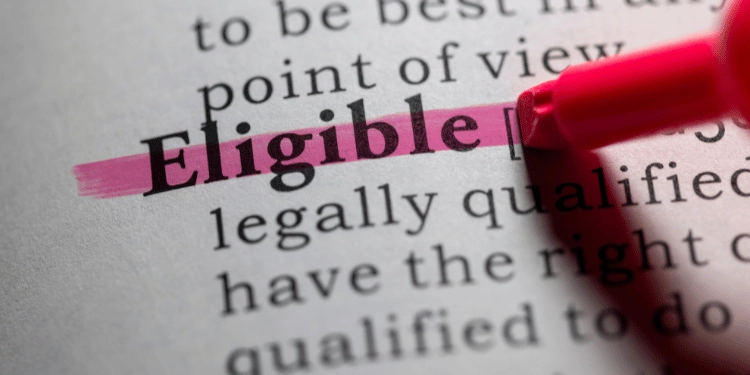Essential Guide: Understanding Your Unemployment Benefits Eligibility
Anúncios
Understanding Unemployment Benefits Basics
Unemployment benefits provide temporary financial assistance for individuals who have lost their jobs.
These payments provide necessary support during the transition period of finding new employment.
Anúncios
Unemployment benefits are crucial as they help sustain a person’s livelihood and cover essential costs such as rent, utilities, and groceries.
It’s important to note that unemployment benefits are also referred to as unemployment insurance, and these terms can be used interchangeably.
Anúncios
Temporary Financial Assistance
The main purpose of unemployment benefits is to provide temporary financial support for individuals who are unemployed through no fault of their own.
This financial aid is meant to help them meet their day-to-day expenses while they search for new job opportunities.
The assistance is not meant to replace the entirety of one’s previous income but to provide a safety net.
Typical Duration
The duration of these benefits typically spans up to 26 weeks.
This period can vary depending on state-specific laws and current economic conditions.
During times of high unemployment, states may offer extended benefits for an additional 13 weeks.
The length of benefit periods is designed to give individuals ample time to find suitable new employment.
Payment Amounts
Regarding payment amounts, unemployment benefits usually equate to around half of the claimant’s previous paycheck.
This compensation rate ensures that the assistance provided is significant enough to offer relief but also encourages the recipient to continue actively seeking employment.
The exact amount can be influenced by the individual’s previous earnings and the state’s specific calculation methods.
Understanding the basic structure and purpose of unemployment benefits sets a solid foundation for exploring eligibility requirements, the application process, and maintaining benefits effectively.
Understanding this information is crucial for anyone trying to navigate the unemployment benefits system.
Eligibility Requirements

Qualifying Circumstances for Job Loss
To qualify for unemployment benefits, one must lose their job through no fault of their own.
Layoffs or company downsizing are common scenarios where individuals become eligible for unemployment benefits.
If you were terminated for reasons such as the role not being a good fit, you could also be eligible.
However, being fired due to misconduct, such as theft or violating company rules, typically disqualifies you from receiving benefits.
Leaving your job usually disqualifies you from unemployment benefits unless you can prove that you had to resign for valid reasons, such as unsafe working conditions or other significant issues that made the job unbearable.
Eligibility Status for Full-Time and Part-Time Workers
Both full-time and part-time workers can receive unemployment benefits as long as they meet the qualifying conditions and their job loss falls under the acceptable circumstances.
The specific eligibility may vary by state, but the principle applies widely.
Immigrant Eligibility Including DACA Recipients
Immigrants are eligible for unemployment benefits, even amidst concerns over public charge status.
This includes DACA recipients who also may qualify for these benefits if they meet the general eligibility requirements.
As highlighted by Renata Castro, an immigration attorney, unemployment benefits are earned benefits available to immigrants, ensuring a level of economic support during periods of job loss.
Understanding the specific conditions for job loss and knowing that eligibility extends to both full– and part-time employees, including immigrants, is essential for navigating unemployment benefits successfully.
Transitioning smoothly, let’s delve into how to initiate the process right after experiencing job loss.
Application Process
Importance of Applying Immediately After Job Loss
When you lose your job, it’s crucial to apply for unemployment benefits right away.
Postponing your application may lead to missing out on weeks of potential benefits.
Some states allow you to file for unemployment benefits even if you have received severance pay.
Taking immediate action ensures you can start receiving financial support as soon as possible.
Required Documentation
Before you begin your unemployment application, gather the necessary documents.
Here’s what you’ll typically need:
- 🗎Your Social Security number
- 🗎Driver’s license or state ID number
- 🗎Employment history for the past 18 months, including the company name, address, phone number, and your supervisor’s name at each job
- 🗎Federal Employer Identification Number (FEIN) from your most recent employer (find this on your W-2 form)
- 🗎Recent pay stubs or any documentation that shows your earnings
Having these documents ready will streamline the application process and help you avoid delays.
Options for Applying
Depending on your state, you have multiple options to file your unemployment benefits claim:
- Online: Most states provide an online application process on their unemployment websites. This method is often the quickest and most convenient.
- By Phone: If you prefer, you can call your state’s unemployment office to file a claim. Refer to the state’s website for the appropriate phone number.
- By Mail or In Person: Some states also allow you to apply by mail or in person at a local unemployment office.
Make sure to follow all provided instructions and fill out every part of the claim form accurately and honestly.
Providing false information can lead to severe consequences, including denial of benefits.
Once your claim is submitted, typically, it takes about two to three weeks to receive your first benefit payment.
Understanding the application process and taking prompt action will help you navigate the initial steps in securing your unemployment benefits.
Maintaining Your Benefits
Filing Weekly Claims on Time
Once you’re approved for unemployment benefits, keeping them depends heavily on filing your weekly claims on time.
Filing late might complicate the process, requiring unnecessary interaction with the state’s unemployment office.
Make it a routine to file on the same day each week to avoid delays.
Payment Methods
When you begin receiving your unemployment benefits, you typically have three payment options:
| 📌 Method | 📍 Details |
|---|---|
| 💳 Debit Card | The state may issue a prepaid debit card for your benefits. This card can be used like any debit card to make purchases, withdraw cash, and more. |
| 🏦 Direct Deposit | This method deposits your unemployment benefits directly into your bank account. It’s convenient and eliminates the waiting time and effort involved in cashing checks. |
| ✉️ Check | While less common, some states still offer checks sent by mail. This method may take longer due to postal service timings, so it’s less efficient than direct deposit or debit cards. |
Typical Timeline for First Benefit Payment
After applying for unemployment benefits, the typical wait time for your first payment is about two to three weeks.
This period allows the state to process your claim and ensures all your documentation is in order.
Using this time to familiarize yourself with the weekly filing process is wise.
With these steps covered, you’re well on your way to maintaining your unemployment benefits smoothly.
Extended Benefits and Special Circumstances
Extended Benefits Program
When the economy takes a downturn and unemployment rates skyrocket, the Extended Benefits (EB) program can provide additional support.
This program offers an extra layer of financial aid to those who have exhausted their regular unemployment insurance benefits.
The specifics can vary by state, but typically, when certain economic indicators are met, you may qualify for up to an additional 13 weeks of benefits.
It’s crucial to check with your state’s unemployment agency to determine if you are eligible and to understand their specific requirements.
Collecting Benefits While Receiving Severance Pay
Interestingly, many states allow you to collect unemployment benefits even if you are receiving severance pay from your previous employer.
This dual support can be crucial during times of transition.
For example, states like Connecticut permit claims for unemployment insurance payments alongside severance payments.
It’s a strategic move to file for unemployment benefits as soon as possible rather than waiting for severance to run out.
This immediate action can ensure continuous financial assistance during your job search.
Additional 13-Week Extension
Apart from the standard Extended Benefits program, there may be other provisions in place during extraordinary times, such as an economic crisis.
For instance, the federal government has previously implemented programs that extend benefits by an additional 13 weeks.
Staying informed and keeping in touch with your state’s unemployment office can provide the latest updates on such extensions.
Ignoring these could mean missing out on critical financial support when you need it the most.
Transition to the Next Chapter
Understanding these special circumstances can significantly impact your financial stability during unemployment.
But navigating unemployment benefits isn’t just about extended programs; it’s also about ensuring you avoid disqualification and remain in good standing throughout your claim process.
Avoiding Disqualification
Importance of Accurate Information and Honest Reporting
One of the key aspects of maintaining your unemployment benefits is to provide accurate and honest information.
Your dates of employment, reasons for job loss, and other details will be verified by your former employer and potentially the state’s unemployment agency.
Any discrepancies can lead to delays and potentially derail your claim.
As Brenda Neckvatal from Mission Critical Impact advises, “Employers keep records of employment dates and other documents for tax and legal reasons“.
False claims, or embellishing details in an attempt to secure benefits, can result in serious consequences.
Stick to the facts on your application; avoid over-elaborating as it may backfire.
Being honest from the start ensures a smoother application process and increases the chances of receiving your benefits without issues.
Requirement to Attend Hearings if Called
Most applicants won’t need to attend a hearing, but if your former employer contests your claim, you might be required to do so.
It’s crucial that you attend if you’re called.
As Neckvatal states, “If you don’t show up for a hearing, it can lead to your claim being denied and gives the impression that your claim wasn’t important enough for you to participate“.
During the hearing, be prepared to present your case with all supporting documents and to answer questions honestly. Your active participation can significantly influence the outcome in your favor.
Consequences of Providing False Information
Lying or providing false information on your unemployment benefits application can have severe consequences.
Not only can it result in the immediate denial of your benefits, but it may also lead to legal repercussions.
States take fraud seriously, and being caught can result in fines, having to repay benefits received, or even facing criminal charges.
Falsifying information, such as exaggerating your wages or the duration of your employment, is risky and counterproductive.
It’s vital to provide truthful information throughout the process to ensure you receive the support you are entitled to without running afoul of the law.
Understanding these rules and the importance of staying transparent throughout can help you successfully maintain your benefits without facing additional challenges.







